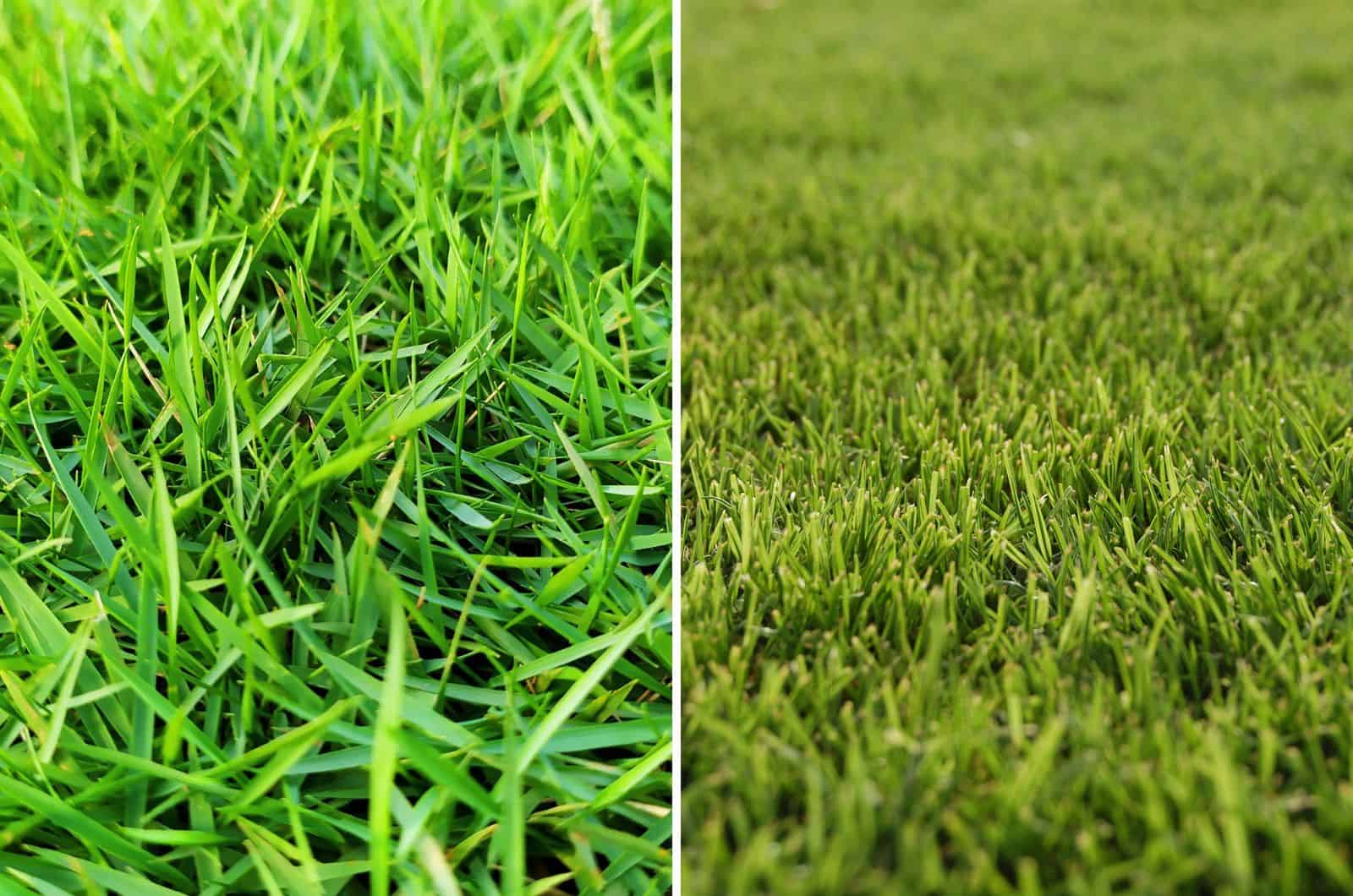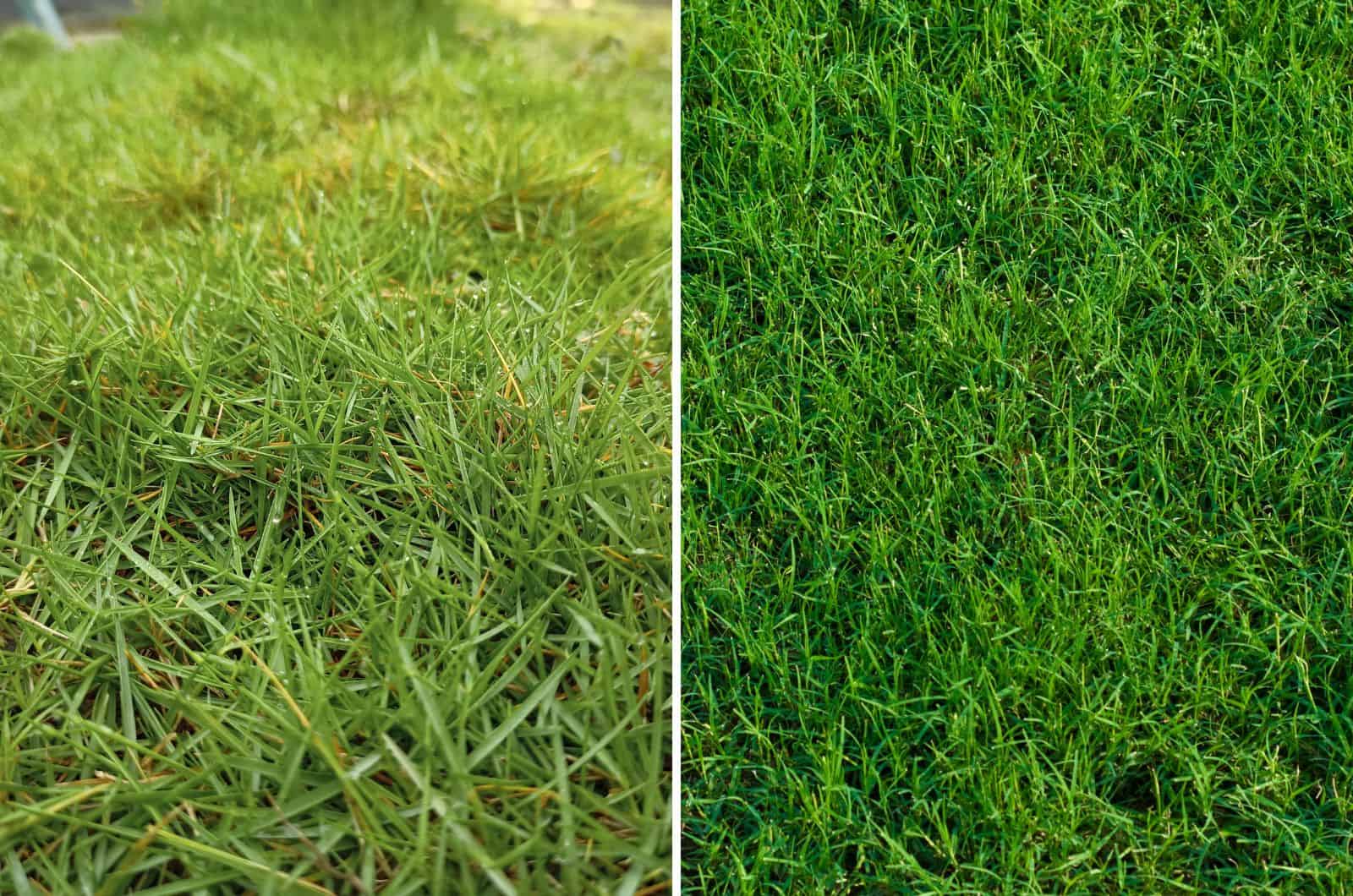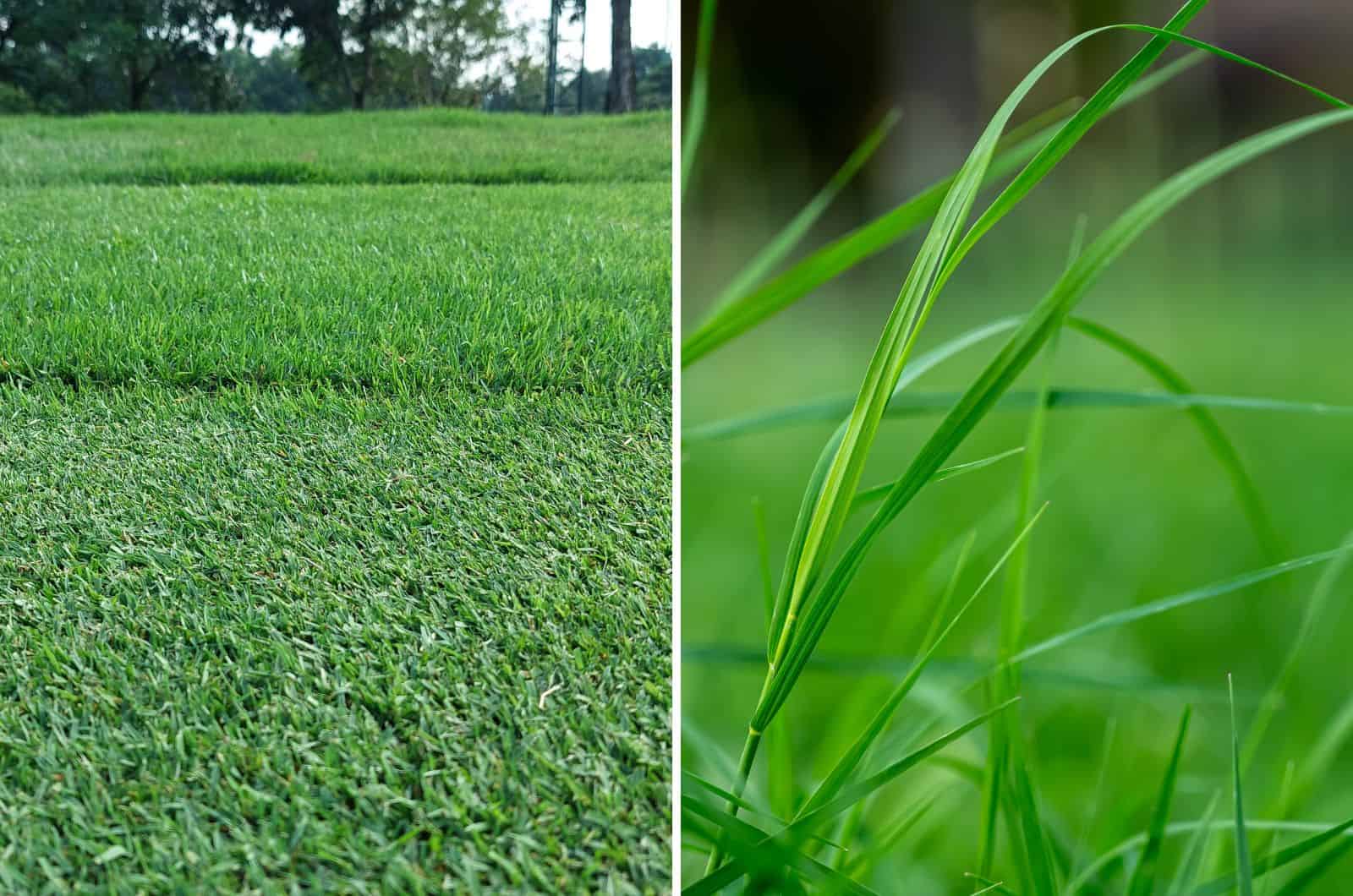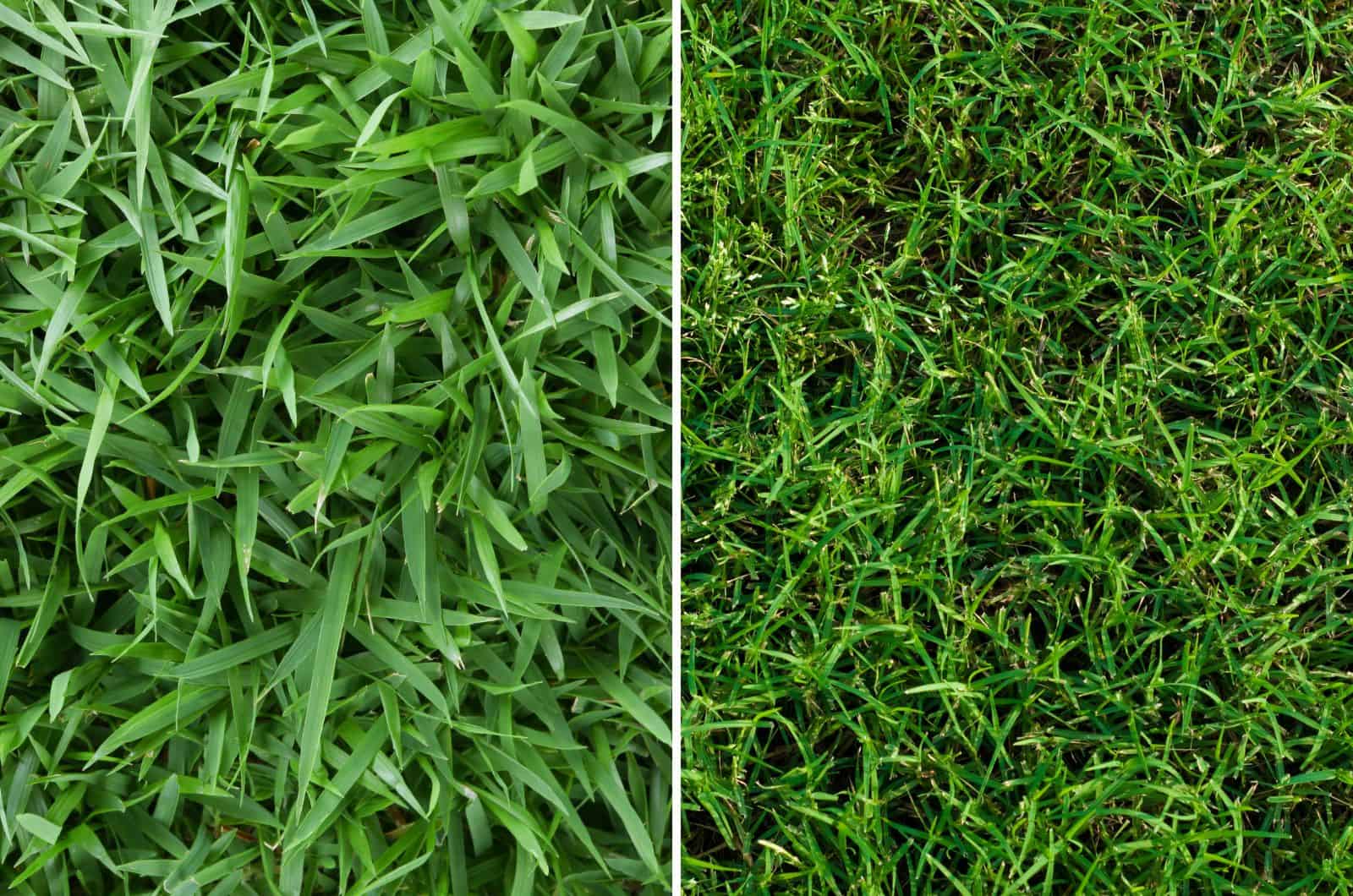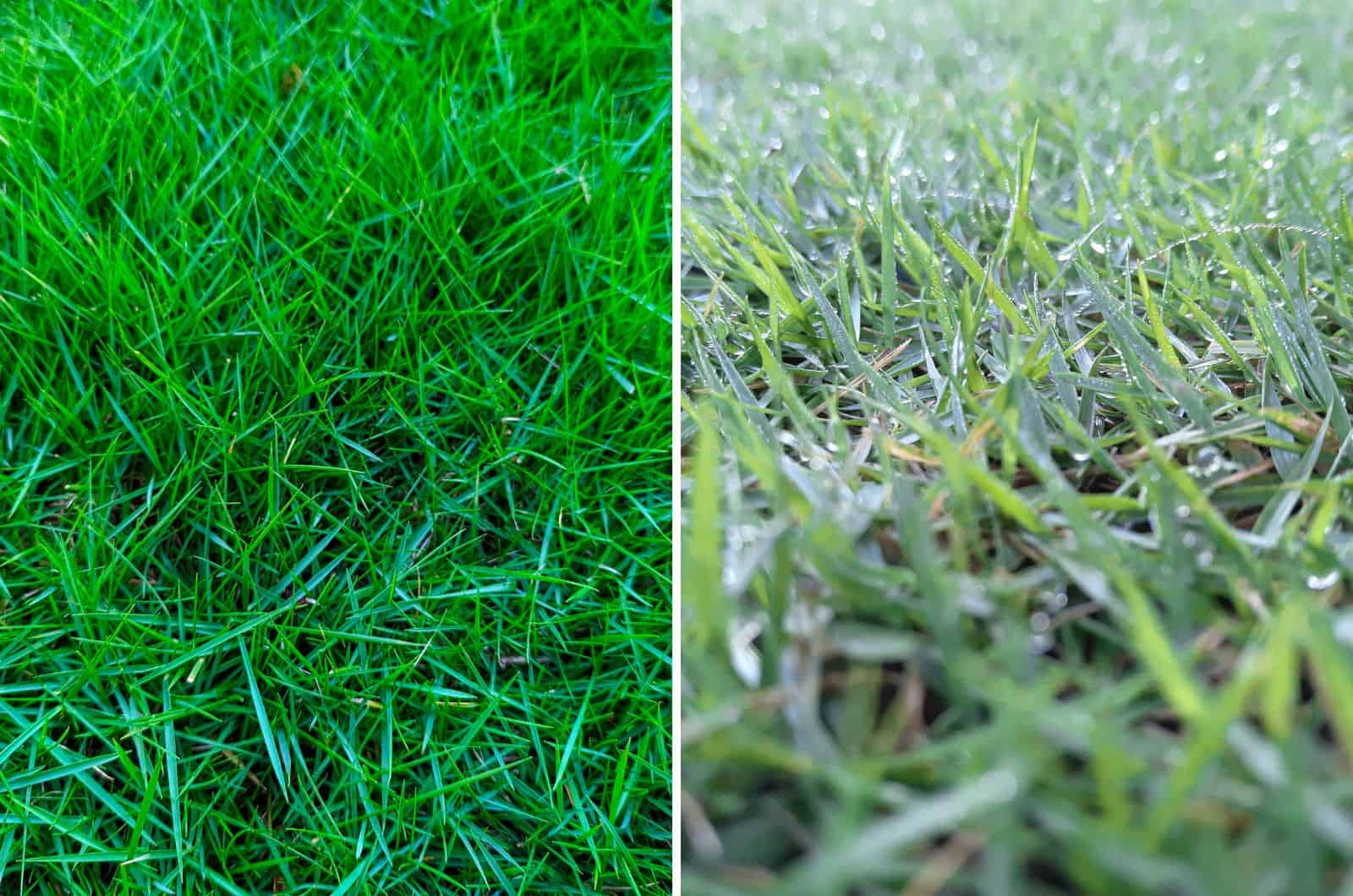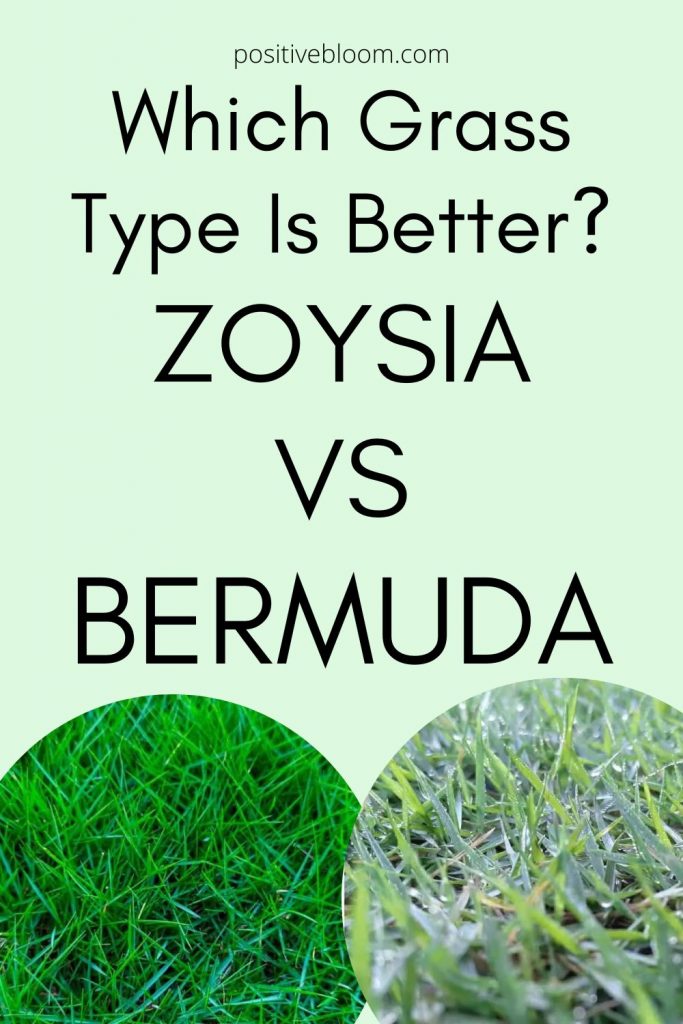Deciding what type of grass to use for your lawn can be tiring, especially because there are endless possibilities!
You have to consider the climate in your region, soil type, foot traffic tolerability, light conditions, and watering needs, and then consider the appearance and decoration.
Some great candidates for your lawn are definitely Zoysia grass and Bermuda grass!
Both of these grass types are very popular in the southern US, and they can also be found on sports fields and golf courses all over the world.
They have their pros and cons, so we are here to help you decide.
Keep reading to find our thorough analysis of Zoysia vs Bermuda grass.
Zoysia Vs Bermuda: An Overview
Both Zoysia and Bermuda grass are homeowners’ top choices when it comes to landscaping and lawn care. Zoysia is actually the number one grass type in Florida!
First, we are going to cover some basic information about both grass types, and then we will compare the two to see which grass is better.
Let’s begin!
Zoysia Grass
If you are looking for low-maintenance lawn grass, then Zoysia is the right choice for you!
You don’t have to worry about the location because it can tolerate full sun, but still grow perfectly fine in partial shade. For high-traffic locations like sports fields or golf courses, zoysia grass is considered one of the best varieties.
If you play golf, you’ve probably already noticed how smooth this grass is.
Because Zoysia grass is a turfgrass that inhibits weed development, requires little water and fertilizer, and is resistant to common pests like chinch bugs, homeowners frequently choose this variety of grass if they don’t want to spend all of their free time taking care of lawn grasses.
The main disadvantage is that it goes into dormancy during a frost, but it ultimately resumes growth when the soil temperature reaches about 70 degrees — typical for warm-season grasses.
Other warm-season grasses include St.Augustine grass, Bahia grass, Centipede grass, and Bermuda grass. Cool-season grasses grow better in cooler climates, and these include Fescue, Ryegrass, and Bluegrass.
Read also: Ryegrass vs Fescue: Everything You Need To Know In One Place
Bermuda Grass
Bermuda grass is the best option if you’re hunting for grass that can withstand drought.
This grass is frequently used on athletic fields because it can tolerate high-traffic and direct sunlight while maintaining its attractive appearance.
This grass is distinctive due to its green-gray color, and it is frequently used to spruce up gardens.
It can also quickly grow in various soil types and generate grass seeds. One of the main issues with any type of lawn grass are annoying weeds — they seem to grow almost anywhere!
Luckily, you can find cheap and effective weed killers for Bermuda grass on Amazon.
Zoysia Vs Bermuda: Which Grass Is Better?
Now we have covered the basics, let’s dig deeper and look more into the features and performances of these grasses. We are going to compare their looks, growth habits, durability, requirements, tolerance, and the common pests and diseases that you could run across.
Let’s dive in!
Growth Habits
Zoysia is one of the slow-growing grass varieties. It will take about 2 to 3 years for it to fully develop and cover an entire lawn. After that, Zoysia grass will grow vigorously and flawlessly!
It also grows very densely, which minimizes the space available for annoying weeds!
On the other hand, Bermuda grass is considered to be one of the best fast-growing grass types (it can even become invasive sometimes!). Once the root systems are established, it grows like crazy!
However, it doesn’t grow as densely as Zoysia grass, and it is more susceptible to weeds. Both types of grasses grow and spread by using stolons and rhizomes. A rhizome extends horizontally underground, frequently just below the soil’s surface. Rhizomes send up stems and new roots that penetrate the earth. A stolon is an above-ground stem that creeps across the soil’s surface before sprouting a clone of the parent plant at its end.
In addition to this, you might also have to use your mower and mow the lawn a lot more with the Bermuda grass type. Yet Zoysia is a lot stiffer, so it could be more difficult to mow.
Appearances
I think that we all want to have the best lawn in the neighborhood, and greener grass on our side of the fence!
Both these grass varieties have green colors, but they differ in shades of green and subtones. We also have to take into account their textures and blade width.
Color
Different Zoysia and Bermuda cultivars have different shades of green. However, when we sum everything up, we can conclude that most Zoysia grass varieties have a dark green color, while Bermuda grasses have more of a deep green-blue color.
Types of Zoysia that have dark green colors include Geo, EMPIRE, Zeon, and the El Torro and Zoro Zoysia types, while Palisades Zoysia has more of a light green color.
The same thing applies to the Bermuda cultivars as well.
Latitude 36 Bermuda has a dark green color, Celebration has a deep blue-green color, Tifway 419 has a solely blue-green color, and NorthBridge Bermuda has bright green color.
Texture
Zoysia grasses have smoother textures compared to Bermuda grasses, which have kind of a prickly and coarse texture. You can see a lot of small hairs on the grass blades when you look closely.
The Zoysia lawn is the one for you if you like to walk barefoot in your yard.
Blade Width
Blade width is where these two grass types differ the most. We usually look at the blade width to distinguish one from the other.
Many Zoysia grasses have wider blades, but some, such as the Geo Zoysia, were bred expressly for narrower blades, which assists in greater shade tolerance. Bermuda grass has extremely fine, hair-like grass blades and a very delicate touch. Though it is commonly used on golf courses and sports fields, it is also used for lawns, driveways, parks, and sidewalks. Many growers decide on Centipede over Bermuda grass for home lawns.
Bermuda grass blade width is usually from 1.5 to 1.7mm, while Zoysia grass has blades that are about 5 to 7 mm wide.
Durability & Tolerance
Let’s discuss durability first. Although you might spend more time and energy to get Zoysia grass to grow vigorously, it is definitely worth it because this grass variety is almost impossible to remove. While Bermuda will require less time to settle in and grow, it can be easily damaged due to heavy rain or overwatering.
However, Bermuda grass has higher wear tolerance and can recover from injuries rather quickly, which is why they are used on golf courses. They can also withstand heavy foot traffic!
We should also discuss drought tolerance and drought resistance. These are two separate things — being able to endure a drought is known as drought tolerance, while drought resistance refers to the capacity of a plant to maintain its aesthetic appeal throughout a drought period up until a point at which it is no longer able to survive without water.
Both grass types require at least one inch of water per week. However, Bermuda grass can grow better in hot weather and dry climates, and it has better drought tolerance and resistance. For instance, Celebration Bermuda grass was cultivated in Australia, so this makes sense.
Bermuda grass also has higher salt tolerance compared to Zoysia grass, which has moderate salt tolerance. On the contrary, Zoysia grass has better shade tolerance and can thrive in partial shade. However, Bermuda grass needs full sun in order to grow happy and healthy!
Soil Requirements
Every grass species has its own soil preference. For instance, most Zoysia grasses thrive in loamy or sandy soil, while Bermuda grasses prefer slightly acidic soils. Nonetheless, both can grow in a variety of soil types, including clay. The soil pH should be between 5.5 to 7 for optimal growth.
Zoysia is mostly affected by pH levels, so if they are out of the preferred range, the grass will start to lose its color and become more susceptible to pests and diseases.
Watering Needs
We already mentioned that both of these grasses require an inch of water per week for normal growth. However, Zoysia prefers to stay in wet soil longer than Bermuda grass.
Bermuda can’t stand soggy soil, and it can easily get overwatered. For instance, if the excess water stays longer than two days, Bermuda grass will most likely get root rot.
This is why having well-draining soil is crucial for maintaining a healthy lawn.
Read also: How Often To Water Grass Seed: Useful Tips And Tricks
Mowing Heights
Each type of grass requires a specific mowing height to stay healthy and look its best!
Zoysia grasses with wider blades are maintained at a height of 1 to 2 inches, while those with more narrow blades are maintained at 0.5 to 1.5 inches. Bermuda grass types are also maintained at a height of 0.5 to 1.5 inches.
Basically, this depends on your preferences. If you like higher grasses, then consider sowing Bermuda grass seeds!
Pests And Lawn Diseases
When it comes to pests and lawn diseases, we can say that the Zoysia grass type has all the common lawn issues. Zoysia is susceptible to pests such as chinch bugs, rubs, billbugs, webworms, thrips, and beetles.
Bermuda grass is susceptible to pests that are attracted to wet soil. Another issue is the thatch layer, which is warm and moist, and creates the perfect environment for various pests and fungi.
Common pests that attack Bermuda grasses include fall armyworms, billbugs, sod webworms, and grub worms. These invisible trouble-makers can completely destroy your lawn, leaving you with bare spots and discolored lawn grass.
Please note that these pests are not likely to attack a healthy lawn!
When it comes to lawn diseases, it’s important that you know which diseases these two grass species are more prone to — this will be extremely helpful in preventing and treating any potential diseases in the future.
Although both grass types are susceptible to fungal diseases, Zoysia grass is more prone to rust, brown spot, and leaf spot. On the other hand, Bermuda grass is more susceptible to pythium, dollar spot, brown patch, and spring dead spot.
Frequently Asked Questions
1. What are the downsides to Zoysia grass?
Zoysia grass can be easily damaged by cold temperatures and sudden temperature changes.
Therefore, it won’t stay green all year round if you live in a colder region.
It is also susceptible to pests like chinch bugs, webworms, thrips, and billbugs, as well as diseases like rust, leaf spot, and brown spot.
Zoysia grass also grows densely, so it can be difficult to mow. It is also a slow grower, so it would take about 2 to 3 years for the grass to grow and fully cover a lawn.
2. What is the difference between Zoysia grass and Bermuda grass?
The first difference is their growth rate — Bermuda grass grows a lot quicker compared to Zoysia grass, which can take up to 3 years to fully cover the lawn. However, Zoysia has a lot smoother texture and grows densely, which actually prevents the annoying weed from growing.
Bermuda grass has a deep green color with a subtle hint of blue, while Zoysia grass has a solely dark green color.
Zoysia varieties have better shade tolerance, but Bermuda grasses have better salt and drought tolerance, and they can withstand heavy foot traffic. Most Zoysia grasses thrive in loamy or sandy soil, while Bermuda grasses prefer slightly acidic soils.
Lastly, Bermuda varieties are prone to overwatering, whereas Zoysia species can withstand wet soil.
3. Is Bermuda grass the fastest-growing type of grass?
In some regions, Bermuda grass is definitely the fastest-growing type of grass. However, this depends on the climate and temperature in your region.
There are two types of grasses: those that like cold weather and those that prefer warmer climates.
The warm-season grass variety that germinates the quickest is Bermuda grass, which does so in less than 7 days.
Because Bermuda grass is a hardy type that enjoys full sunlight if you decide to cultivate it, be prepared to cut it frequently.
Three warm-season grass varieties that also grow more rapidly are St. Augustine, Zoysia, and Centipede.
The cool-season grass with the fastest rate of growth is perennial ryegrass, also referred to as ryegrass. These grasses are relatively simple to manage and will germinate in 5 to 10 days. Additionally, Kentucky Bluegrass is a cool-season and fast-growing type of grass.
Conclusion
After our thorough analysis of Zoysia vs Bermuda grass types, I am sure that you can now decide which grass type to grow. Both grass types definitely have their advantages and disadvantages.
If your goal is to have a fully covered lawn on short notice, then Bermuda grass is the one for you. But be careful, though, because they don’t have great shade tolerance!
However, the Bermuda variety has better drought tolerance, and it can withstand heavy foot traffic. It is also ideal for golf courses.
Zoysia grass has a more vibrant color and dense growth, which actually stops weeds from growing.
Don’t forget to take into consideration the climate in your area, soil type, and sun exposure when choosing lawn grasses.
I hope this article was helpful.
Until next time!
Like this post? Share or pin it for later!

